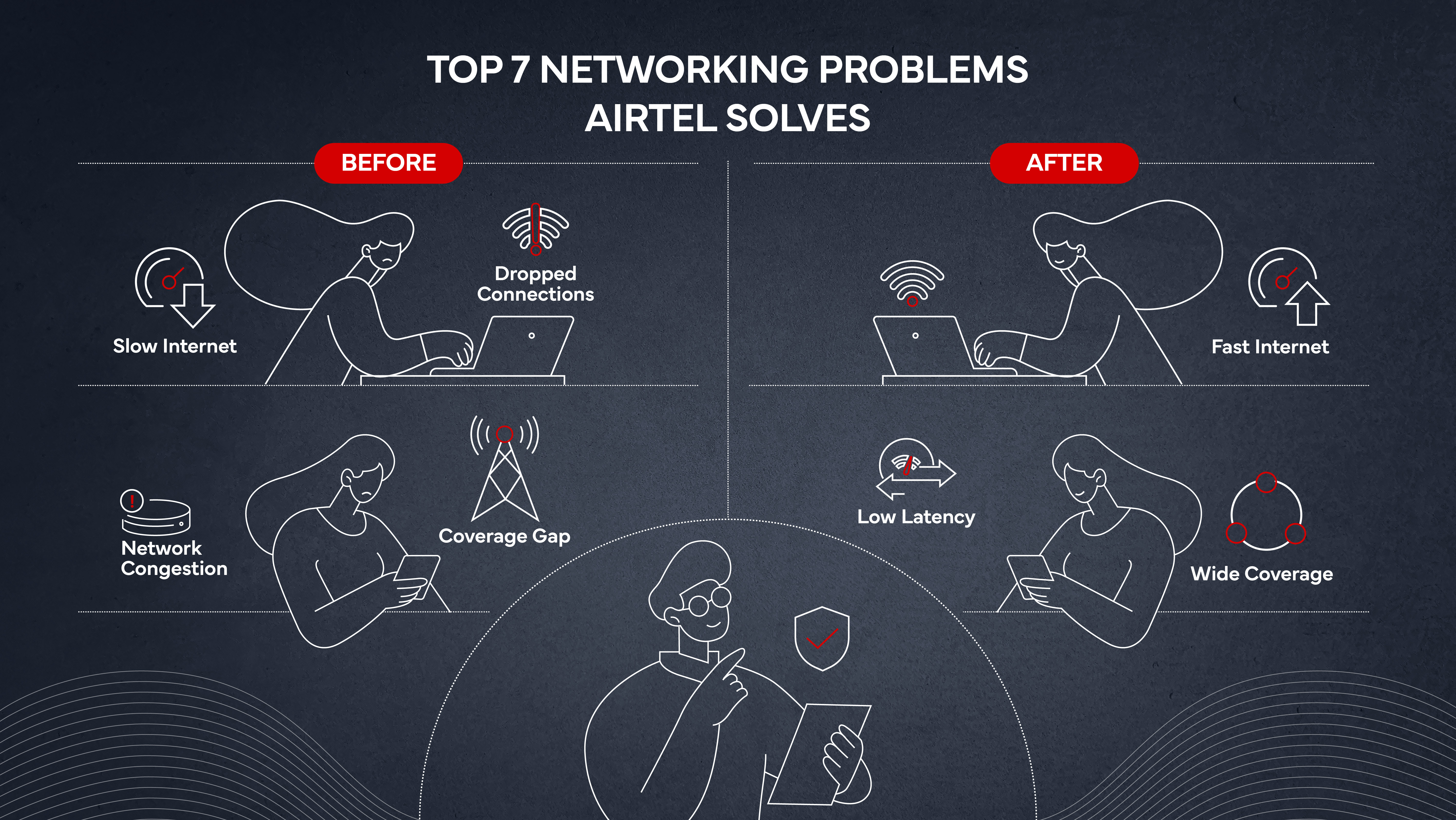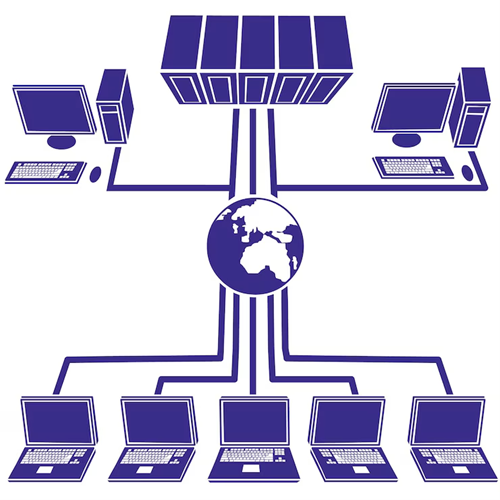How Leased Lines Support High-Bandwidth Applications like Video Conferencing and Cloud Computing?
-
January 23, 2025
-
10 min read

How do leased lines for high-bandwidth applications optimise the throughput and latency critical for advanced digital solutions such as video conferencing and cloud computing?
In an era where data-intensive technologies demand robust network infrastructures, leased lines emerge as specialised telecommunication pathways designed to support sustained high data rates with minimal jitter and latency.
These dedicated circuits ensure that bandwidth allocation is symmetric and uncontested, crucial for maintaining the integrity of data flows in real-time communication and large-scale data transfers.
This guide examines the structural and operational parameters of leased lines, highlighting their role in enhancing deterministic network performance and facilitating enterprise-level scalability and connectivity.
What are Leased Lines?
Leased lines are dedicated telecommunications circuits that establish permanent, point-to-point connections primarily used for internet and other data services.
Leased lines deliver continuous, symmetric bandwidth dedicated solely to the contracting entity, typically a business or large organisation. These lines facilitate consistent data flow without fluctuations in speed, irrespective of external traffic loads.
The working mechanism revolves around a fixed bandwidth reservation, ensuring that the capacity remains constant, thus offering a predictable and secure transmission medium.
- Reliability: Leased lines are renowned for their reliability due to the dedicated nature of the service, guaranteeing uptime and minimal disruptions.
- Symmetry: They provide symmetric upload and download speeds, essential for applications like real-time video conferencing and large-scale file transfers.
- Scalability: Users can select from various bandwidth options, allowing scalability according to organisational needs.
- Security: As a private connection, leased lines are more secure than connections over public networks, reducing the risk of data breaches.
Types of Leased Lines
There are several types of leased lines available, each catering to different needs based on bandwidth requirements and connectivity.
- Fibre Leased Lines: Utilising optical fibre technology, these offer the highest speeds and reliability, suitable for data-intensive applications and large networks.
- Ethernet Leased Lines: Known for versatility, these support multiple data forms and are ideal for businesses looking for cost-effective yet robust solutions.
- Analogue Leased Lines: Though less common today, analogue lines are used primarily for low-volume data transfers and are phased out in favour of digital solutions.
Each type serves distinct purposes, from enhancing internal data centre connectivity to providing robust internet access.
Video Conferencing and its Bandwidth Requirements
Video conferencing has become a staple in modern communication, especially in business settings. It demands high-quality, real-time video and audio transmission, heavily reliant on robust network infrastructure.
Challenges of Video Conferencing
Deploying effective video conferencing systems often presents multiple technical challenges. These issues primarily stem from varying network conditions that can affect the quality of the communication.
- Latency: High latency can cause delays in communication, making interactions feel less natural and more disjointed.
- Packet Loss: This occurs when data fails to reach its destination, leading to gaps in audio and video streams that can disrupt meetings.
- Jitter: Variations in packet delay can result in poor video quality and asynchronous audio and video.
- Bandwidth Fluctuation: Inconsistent network bandwidth can cause the video quality to vary during a call, affecting the overall user experience.
Each of these factors plays a critical role in the effectiveness of video conferencing and can significantly diminish the quality of communication if not properly managed.
Bandwidth Needs for Effective Video Conferencing
For video conferencing to be effective, substantial bandwidth is essential to accommodate the high data requirements of real-time video and audio.
- High-Definition Video: HD video conferencing can require between 1 Mbps to 6 Mbps of bandwidth per participant, depending on the video quality.
- Standard Definition Video: More moderate than HD, standard video typically consumes about 0.5 Mbps to 1 Mbps per participant.
- Audio: While audio requires significantly less bandwidth than video, it is crucial that audio quality remains high to ensure effective communication.
Cloud Computing and Bandwidth Demands
Cloud computing has revolutionised how businesses deploy and manage IT resources, offering scalable access to computing power and data storage across the internet.
Overview of Cloud Services
Cloud services encapsulate a range of offerings from infrastructure and platforms to software solutions, accessible over the internet. These services enable organisations to leverage computing resources on-demand without the need for physical hardware investment.
- Infrastructure as a Service (IaaS): Provides virtualised computing resources over the internet, including servers, storage, and networking.
- Platform as a Service (PaaS): Offers hardware and software tools over the internet, typically for application development.
- Software as a Service (SaaS): Delivers applications as a service over the internet, removing the need for local installation and maintenance.
- Storage and Backup: Cloud services offer scalable storage solutions, crucial for data backup, disaster recovery, and archiving.
- Hybrid and Multi-cloud Environments: These complex deployments combine private and public clouds, offering flexibility and optimisation of computing resources.
Each type of cloud service requires a robust network to function effectively, impacting the bandwidth demands placed on an organisation’s internet infrastructure.
Bandwidth Requirements for Cloud Applications
The bandwidth requirements for cloud applications can vary significantly depending on the type and usage of the service. Adequate bandwidth is essential for ensuring efficient operation and accessibility of cloud-based applications.
- Data Transfer Volumes: Higher data transfer demands higher bandwidth to maintain performance levels, especially noticeable in cloud backup and disaster recovery services.
- Real-time Applications: Cloud solutions such as streaming services and real-time data processing require high bandwidth to avoid latency and buffer issues.
- Simultaneous Connections: Multiple users accessing cloud applications simultaneously can strain network resources, necessitating greater bandwidth to accommodate concurrent sessions.
- API Calls: Frequent API calls to cloud services for data synchronisation and service requests also contribute to increased bandwidth usage.
For businesses relying heavily on cloud services, consistent and high-speed internet connectivity is non-negotiable. Fluctuations in bandwidth can lead to disruptions in service availability and performance degradation, affecting operational efficiency and user experience.
Benefits of Leased Lines for High-Bandwidth Applications
Leased lines provide critical infrastructure support for high-bandwidth applications, offering unparalleled benefits in terms of connectivity and performance.
1. Reliability and Uptime
Leased lines for high-bandwidth applications are synonymous with reliability. These dedicated lines ensure constant connectivity crucial for businesses that cannot afford downtime. The absence of other traffic ensures that leased lines are less prone to outages and interruptions compared to shared connections.
- Dedicated Connection: A private link means no sharing with other users, thus reducing congestion and ensuring stable connectivity.
- Service Level Agreements (SLAs): Providers typically offer SLAs that guarantee high uptime, often up to 99.9%, assuring businesses of continuous service availability.
- Quick Fault Resolution: Any issues are often addressed with high priority due to the critical nature of the service, minimising potential downtime.
2. Symmetrical Upload and Download Speeds
One of the hallmark features of leased lines for high-bandwidth applications is their ability to provide symmetrical upload and download speeds. This is vital for applications such as video conferencing, cloud services, and large data transfers where equal importance is placed on both uploading and downloading data.
- Equal Bandwidth Distribution: Symmetrical speeds are essential for businesses that produce and consume large amounts of data.
- Enhanced Performance: Equal upload and download capabilities ensure that interactive applications and services operate efficiently without lag.
- Consistent Speeds: Unlike office broadband, leased lines do not suffer from peak time slowdowns, offering consistent performance regardless of the time of day or night.
3. Scalability and Flexibility
Scalability is a significant advantage of leased lines, allowing businesses to adapt their bandwidth requirements as their needs evolve. This flexibility supports growth and the integration of new technologies without the need to overhaul the existing infrastructure completely.
- Customisable Bandwidth Options: Companies can start with what they need and increase capacity as their requirements grow, without significant delays or changes in infrastructure.
- Support for Multiple Applications: As the backbone for digital communications, leased lines can support various applications from a single connection, simplifying network management.
- Future-Proofing: The capability to scale up on demand ensures that businesses can future-proof their operations against increased data demands.
Comparison with Other Internet Access Solutions
Comparing leased lines with other internet access options like broadband and MPLS reveals distinct advantages and limitations suitable for various business needs.
Broadband Vs Leased Lines
Broadband is a widely used internet access method known for its cost-effectiveness and wide availability. However, it differs significantly from leased lines in several critical aspects.
- Shared vs. Dedicated: Broadband services are shared among many users, leading to possible fluctuations in speed during peak times. In contrast, leased lines provide a dedicated connection, offering consistent bandwidth exclusively to one user.
- Speed Variation: Broadband often has asymmetrical speeds, with slower upload than download speeds, which can hinder businesses relying on heavy upload activities. Leased lines offer symmetrical speeds, crucial for applications requiring significant upload capacity such as hosting servers or video conferencing.
- Reliability and SLAs: Broadband does not typically come with the stringent Service Level Agreements (SLAs) that accompany leased lines. The latter often includes guaranteed uptime and faster fault resolution, making them more reliable for business-critical operations.
MPLS and Other Dedicated Connections
MPLS (Multiprotocol Label Switching) and other dedicated connections provide alternatives to traditional leased lines, each with unique features and benefits.
- Technology: MPLS supports efficient data traffic management by directing data from one network node to the next based on short path labels rather than long network addresses, avoiding complex lookups in a routing table.
- Performance: Dedicated connections such as MPLS allow for prioritising traffic types, which is beneficial for applications needing real-time performance, such as voice and video communications.
- Flexibility and Scalability: While MPLS offers great flexibility in terms of routing and network efficiency, it can be complex to set up and manage. Leased lines, on the other hand, provide a simpler configuration but with robust scalability and reliability tailored for enterprise use.
Comparison Table
| Feature | Broadband | Leased Lines | MPLS |
| Connection Type | Shared | Dedicated | Dedicated |
| Speed Symmetry | Asymmetrical | Symmetrical | Symmetrical (configurable) |
| Reliability | Lower | Higher | Higher |
| Cost | Lower | Higher | Varies (generally high) |
| Best for | General browsing, small office use | High-demand business applications, large enterprises | Large enterprises with complex network needs |
| SLAs | Rare | Common, with guarantees | Common, with guarantees |
Supercharge Your Digital Capabilities with Airtel’s Dedicated Internet Leased Lines
For enterprises relying on leased lines for high-bandwidth applications, Airtel’s Dedicated Internet Leased Lines are the ideal solution. They guarantee flawless operation of crucial services like video conferencing and cloud computing.
Airtel offers consistent high speeds and unmatched reliability, with symmetrical upload and download capabilities essential for managing significant data volumes seamlessly across various platforms.
This robust and secure network infrastructure is specifically designed to meet the rigorous demands of modern high-bandwidth applications, making Airtel a pivotal partner for businesses aiming to boost productivity and expand digitally.
Enhance your enterprise’s operational efficiency with Airtel’s tailored connectivity solutions.
Securing Future Success: Harnessing Leased Lines for Optimal Performance
As we conclude, it’s clear that leased lines for high-bandwidth applications are more than just a connectivity solution; they are a strategic asset in this digital landscape. For businesses deploying high-bandwidth applications like video conferencing and cloud computing, the reliability, symmetry, and security offered by leased lines make sure that digital operations run smoothly and efficiently.
With Airtel’s Dedicated Internet Leased Lines, companies can enjoy dedicated support, enhanced security, and the ability to scale services to meet evolving needs. This makes Airtel an ideal partner for any business looking to enhance its digital infrastructure and drive growth in an increasingly connected world.
Choose Airtel’s ILL solutions and position your business for success in the digital era.
Ensure uninterrupted operations with dedicated line internet backed by Airtel’s SLA commitments.
 Share
Share









